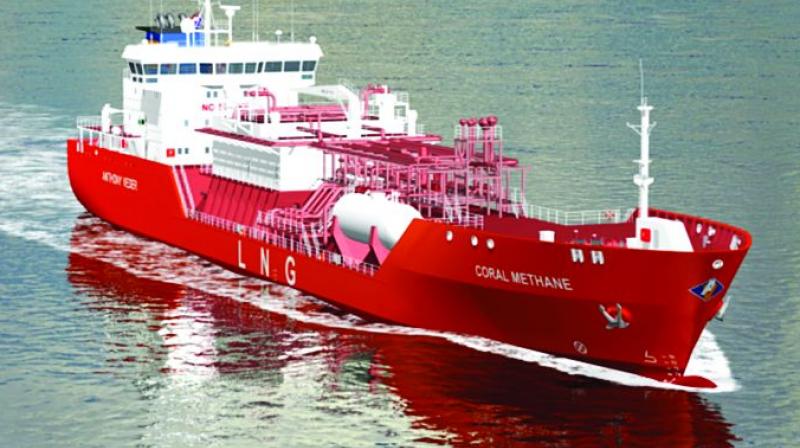Small ship is next big thing for $150 bn LNG biz

Giant ocean-going tankers built the liquefied natural gas industry into a $150-billion-a-year business. The next expansion opportunity may come from ships a seventh of the normal size.
Fifty-five years after the first commercial LNG tanker sailed from Algeria, this segment of the gas industry is pushing into ever more niche markets, upending the economics of energy supply in the process.
Its next leap forward will be serving customers whose ports or budgets are too small to handle regular LNG tankers. Known as small-scale LNG, the idea is to make the fuel chilled to minus 160-degrees Celsius (256 Fahrenheit) accessible to factories, trucks, ships and even households. That’s set to spur production capacity growth of 58 per cent over the next five years, more than double the pace of the industry in total.
“We are just at the end of the beginning,” said Andrew Pickering, the Chief Executive Officer of Avenir LNG, a London-based supplier set up less than a year ago to focus on the small end of the business. “Let the established players continue to develop large scale and see how we can connect the two.”
LNG already is the quickest growing part of the fossil fuel industry as customers switch away from more polluting forms of energy like coal. The super-chilled fuel is helping reduce smog in cities, it’s bringing affordable energy to isolated markets and even become a bargaining chip in US trade talks.
The International Gas Union classifies a small-scale LNG vessel as one with capacity under 30,000 cubic meters. That's about 1/7th of the biggest tankers from Qatar, the worlds’ biggest LNG producer.
The traditional ships helped create a global trade in the fuel, building an alternative for utilities and industrial customers to gas that arrives by pipeline. Smaller tankers can help LNG reach a growing number of buyers that only need a fraction of the cargo that a regular tanker can carry.
With an LNG terminal, customers can take shipments from any of the countries that produce the fuel — a group as far flung as Australia, the US, Algeria, Angola, Qatar and Russia. As new LNG production plants come online, market players are searching for where to place the increasing supply and finding small customers can absorb great volumes.
Global small-scale production is about 25 million tonnes per year. That’s a tiny part of the entire LNG industry, which handled more than 300 million tonnes last year.
Still, the small-scale end of the business may grow 6 per cent a year, according to the IGU.

